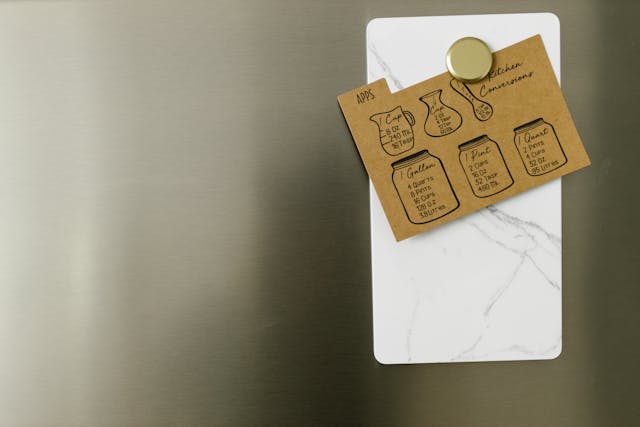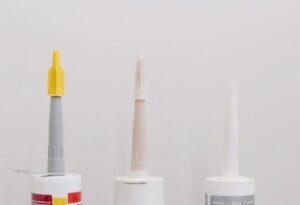Magnets can be incredibly useful for everything from securing objects to displaying photos on your fridge, but when it’s time to remove them, the process can be a bit tricky. If you’ve ever tried to remove a magnet without damaging the surface, you know that it’s not always as easy as simply pulling it off. Whether you’re working with painted walls, stainless steel, or glass, using the wrong technique could lead to scratches, paint peeling, or other surface damage.
In this guide, we’ll provide practical solutions and expert tips on how to remove a magnet without damaging the surface. We’ll cover various materials, techniques, and helpful tools that can make this task easier and safer. The best part? You’ll learn how to preserve the integrity of your surfaces while effectively removing magnets, even those that are stubbornly stuck.
Why You Need to Remove Magnet Without Damaging the Surface
When it comes to using magnets for various purposes, it’s easy to forget that they can leave marks or cause damage over time. Magnets are often used on metal surfaces, refrigerators, or even magnetic whiteboards, but removing them improperly can lead to unwanted damage.
If you want to remove a magnet without damaging the surface, it’s important to understand how magnets work and the kind of stress they put on materials. Some surfaces, like paint, can be easily scratched, while others, like stainless steel, may develop marks. The goal is to ensure that you can remove the magnet without damaging the surface, whether it’s a painted wall, fridge, or furniture.
Understanding the risks will help you approach the removal process with the right mindset, tools, and techniques to avoid any potential damage. This way, you’ll be able to keep your surfaces looking pristine, no matter how often you use magnets.
Tools and Materials Needed to Remove Magnet Without Damaging the Surface
To remove a magnet without damaging the surface, it’s essential to have the right tools on hand. You won’t need any specialized equipment, but there are a few things that can make the process much easier and more effective.
Plastic Scrapers or Spatulas: These are perfect for gently loosening magnets without causing scratches. You can use a plastic scraper to pry the magnet off without applying excessive pressure.
Hair Dryer or Heat Gun: Heat can help loosen the adhesive or pull of the magnet, making it easier to remove the magnet without damaging the surface. Applying low heat for a short time will soften the glue.
Dental Floss or Fishing Line: If the magnet is stuck firmly, dental floss can be a great tool to carefully cut through any adhesive without damaging the surface.
Rubbing Alcohol or Cleaning Solution: If there is any residue left behind from the magnet’s adhesive, rubbing alcohol can help clean it up without harming the surface.
Having these tools on hand will help you ensure that you can remove a magnet without damaging the surface and avoid any unnecessary mishaps.
How to Remove Magnet Without Damaging the Surface: The Step-by-Step Process
The process of removing a magnet without damaging the surface can vary depending on the material you’re working with. However, the general steps remain the same. Here’s a simple step-by-step guide:
Assess the Magnet’s Placement: Before you start, check how the magnet is placed. If it’s attached using adhesive, the process will differ slightly from a magnet placed on a smooth metal surface.
Loosen the Magnet with Heat: Use a hairdryer or heat gun on low heat to warm up the magnet. This will loosen any adhesive, making it easier to remove the magnet without damaging the surface.
Gently Pry the Magnet Off: Once the surface is warmed, use a plastic scraper or spatula to gently lift the edges of the magnet. Work carefully around the magnet’s perimeter to avoid damaging the surface.
Use Dental Floss: If the magnet is still firmly attached, thread dental floss underneath it and use a sawing motion to carefully cut through the adhesive.
Clean the Surface: After removing the magnet, use rubbing alcohol or a gentle cleaning solution to remove any adhesive residue. Be sure to wipe the surface clean with a soft cloth.
By following these steps, you can remove the magnet without damaging the surface and restore your space to its original condition.
Removing Magnets from Different Surfaces Without Damage
Not all surfaces are created equal when it comes to magnet removal. Here’s how to handle different types of surfaces while ensuring that you remove a magnet without damaging the surface.
Wood Surfaces: Wood can be delicate, so it’s crucial to use gentle techniques. Heat and a plastic scraper work well on wooden furniture or cabinets.
Painted Walls: For painted walls, excessive heat could cause the paint to peel. Use a plastic scraper with care, and avoid applying too much force.
Stainless Steel: Stainless steel surfaces are generally resistant to scratching, but you should still be cautious. Use a gentle heat source and avoid abrasive tools to remove the magnet without damaging the surface.
Glass: Glass is one of the most forgiving surfaces, but even so, you should use gentle tools. A plastic scraper can help remove the magnet and any adhesive.
By adjusting your technique based on the surface, you can safely remove the magnet without damaging the surface, ensuring your furniture and walls remain in top condition.
Common Mistakes to Avoid When Removing Magnets
When you try to remove a magnet without damaging the surface, it’s easy to make a few common mistakes. Here are a few things to avoid:
Using Metal Tools: Avoid using metal tools like knives or screwdrivers, as they can scratch or damage the surface. Always use plastic tools instead.
Applying Too Much Heat: Too much heat can damage certain surfaces, like paint. Always use a low heat setting and apply it carefully.
Pulling the Magnet Too Hard: Applying too much force can cause permanent damage. Always work slowly and gently to remove the magnet.
Not Testing the Adhesive First: Before you start prying off the magnet, make sure it’s the adhesive that’s holding it. Sometimes magnets are just stuck to a magnetic surface, which can be removed easily by sliding them off.
Avoiding these mistakes will help ensure that you successfully remove the magnet without damaging the surface.
How to Remove Strong Magnets Without Damaging the Surface
Some magnets are exceptionally strong, which can make them more challenging to remove. To remove a strong magnet without damaging the surface, follow these advanced techniques:
Use a Stronger Heat Source: A heat gun on a low setting can help break the adhesive bond without harming the surface.
Pull with Dental Floss: For magnets with powerful adhesive, thread dental floss underneath and gently use a back-and-forth motion to break the bond.
Work in Small Increments: If the magnet doesn’t come off in one go, try prying small sections at a time rather than trying to force the whole thing off at once.
These tips will help you handle more stubborn magnets safely and effectively.
How to Prevent Magnet Damage to Your Surfaces
To prevent having to remove a magnet without damaging the surface, consider these preventive measures:
Use Magnetic Strips: Instead of placing magnets directly on walls or furniture, use removable magnetic strips. This prevents adhesive buildup and makes removal much easier.
Opt for Non-adhesive Magnets: Whenever possible, choose magnets that don’t use adhesive to hold them in place. These magnets can be removed quickly without leaving marks.
Regular Cleaning: Keep your surfaces clean and free of any adhesive buildup from magnets. Regular maintenance will make it easier to remove a magnet without damaging the surface in the future.
Conclusion: The Key to Removing Magnets Without Damage
Knowing how to remove a magnet without damaging the surface is a valuable skill for maintaining the integrity of your furniture and walls. Whether you’re working with painted walls, wood, or stainless steel, taking a careful approach can help prevent damage and keep your surfaces looking pristine.
By using the right tools, taking your time, and following the proper techniques, you can safely and effectively remove magnets from any surface without causing harm. Keep these tips in mind, and you’ll never have to worry about damaging your surfaces when removing magnets again.

Share this:
- Click to share on Facebook (Opens in new window) Facebook
- Click to share on X (Opens in new window) X
- Click to share on LinkedIn (Opens in new window) LinkedIn
- Click to share on Reddit (Opens in new window) Reddit
- Click to share on X (Opens in new window) X
- Click to share on Threads (Opens in new window) Threads
- Click to share on WhatsApp (Opens in new window) WhatsApp




